Related Research Articles

Year 1523 (MDXXIII) was a common year starting on Thursday of the Julian calendar.

Year 1470 (MCDLXX) was a common year starting on Monday of the Julian calendar.
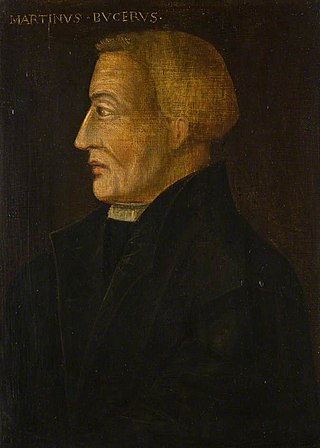
Martin Bucer was a German Protestant reformer based in Strasbourg who influenced Lutheran, Calvinist, and Anglican doctrines and practices. Bucer was originally a member of the Dominican Order, but after meeting and being influenced by Martin Luther in 1518 he arranged for his monastic vows to be annulled. He then began to work for the Reformation, with the support of Franz von Sickingen.

Franz von Sickingen was a knight of the Holy Roman Empire who, with Ulrich von Hutten, led the so-called "Knights' War," and was one of the most notable figures of the early period of the Protestant Reformation. Sickingen is posthumously known as "the last knight", an epithet he shared with his contemporaries Chevalier de Bayard and Emperor Maximilian.
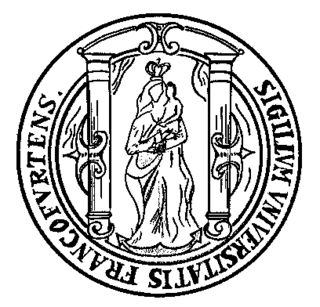
European University Viadrina Frankfurt (Oder) (German: Europa-Universität Viadrina Frankfurt (Oder)) is a university located at Frankfurt (Oder) in Brandenburg, Germany. It is also known as the University of Frankfurt (Oder). The city is on the Oder River, which marks the border between Germany and Poland. With 5,200 students — around 1,000 of whom come from Poland — and some 160 teaching staff, the Viadrina is one of Germany's smallest universities (only the University of Erfurt and Jacobs University Bremen have fewer students).

Ulrich von Hutten was a German knight, scholar, poet and satirist, who later became a follower of Martin Luther and a Protestant reformer.
Ulrich, is a German given name derived from Old High German Uodalrich, Odalric. It is composed of the elements uodal- meaning "heritage" and -rih meaning "king, ruler". Attested from the 8th century as the name of Alamannic nobility, the name is popularly given from the high medieval period in reference to Saint Ulrich of Augsburg.
The Duchy of Württemberg was a duchy located in the south-western part of the Holy Roman Empire. It was a state of the Holy Roman Empire from 1495 to 1806. The dukedom's long survival for over three centuries was mainly due to its size, being larger than its immediate neighbors. During the Protestant Reformation, Württemberg faced great pressure from the Catholic emperors to remain loyal. Württemberg resisted repeated French invasions in the 17th and 18th centuries, the duchy being directly in the path of French and Austrian armies who were engaged in the long rivalry between the House of Bourbon and the House of Habsburg. In 1803, Napoleon raised the duchy to be the Electorate of Württemberg. On 1 January 1806, the last elector assumed the title of King of Württemberg. Later that year, on 6 August 1806, the last Emperor, Francis II, abolished the Holy Roman Empire.
The Knights' War, also known as the (German) Barons' War, was a failed attempt by the Brotherly Convention led by the Protestant knight Franz von Sickingen to militarily remove Prince-bishop Richard of Trier and secularize his lands. The short-lived war resulted in the death of Sickingen and inspired the German Peasants' War of 1524–1526.

Casimirof Brandenburg-Bayreuth was Margrave of Bayreuth or Margrave of Brandenburg-Kulmbach from 1515 to 1527.
Otto Brunfels was a German theologian and botanist. Carl von Linné listed him among the "Fathers of Botany".
The Prince-Bishopric of Constance was a small ecclesiastical principality of the Holy Roman Empire from the mid-12th century until its secularisation in 1802–1803. In his dual capacity as prince and as bishop, the prince-bishop also administered the Diocese of Konstanz, which existed from about 585 until its dissolution in 1821, and whose territory extended over an area much larger than the principality. It belonged to the ecclesiastical province of Mainz since 780/782.

Saint-Hippolyte is a commune in the Haut-Rhin department in Grand Est in north-eastern France.

Sien is an Ortsgemeinde – a municipality belonging to a Verbandsgemeinde, a kind of collective municipality – in the Birkenfeld district in Rhineland-Palatinate, Germany. It belongs to the Verbandsgemeinde Herrstein-Rhaunen, whose seat is in Herrstein.

Luther is the 1974 American biographical drama film of John Osborne's biographical play, presenting the life of Martin Luther. It was one of eight in the first season of the American Film Theatre's series of plays made into films. It was produced by Ely Landau, directed by British director Guy Green, and filmed at Shepperton Studios, England. The film presents Martin Luther and his legacy for the world to evaluate. The young knight narrator is an "everyman" character who confronts Luther for advocating the suppression of the Peasants' Revolt of 1524–1526.
Ulrich II, Lord of Hanau was Lord of Hanau from 1305/1306 until his death.
Feudalism in the Holy Roman Empire was a politico-economic system of relationships between liege lords and enfeoffed vassals that formed the basis of the social structure within the Holy Roman Empire during the High Middle Ages. In Germany the system is variously referred to Lehnswesen, Feudalwesen or Benefizialwesen.

Steckelberg Castle is a ruined hill castle near Ramholz, in the borough of the East Hessian town of Schlüchtern in Germany.
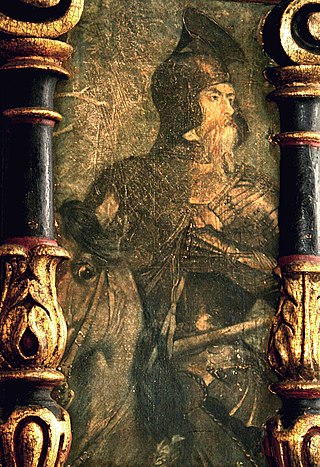
The Franconian War was waged in 1523 when the Swabian League attacked several robber baron castles in Franconia, whose nobles were supporters of Hans Thomas of Absberg in the Absberg Feud.

Philipp, Count of Solms-Lich was a German nobleman. He ruled as Count of Solms zu Lich. He was also a councilor at the courts of Maximilian I, Charles V and Frederick III, as well as a patron of art and architecture.